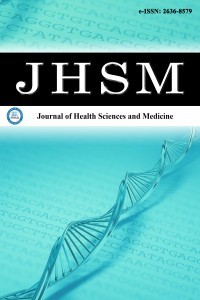1.
Koekkoek B, Van Meijel B, Hutschemaekers G. “Difficult patients” in mental health care: a review. <em>Psychiat Serv.</em> 2006; 57(6):795-801.
2.
Ozen ME, Orum MH, Kalenderoglu A. Difficult patient in psychiatry practice: a case-control study. <em>Adıyaman Üni J Health Sci.</em> 2018;4(3):1064-1073.
3.
Hahn SR. Physical symptoms and physician-experienced difficulty in the physician-patient relationship. <em>Ann Int Med.</em> 2001;134(9):897-904.
4.
Katz A. How do we define “difficult” patients? <em>Oncol Nurs Forum.</em> 2013;40(6):531.
5.
Tanoubi I, Cruz-Panesso L, Drolet P. The patient, the physician, or the relationship: who or what is “difficult”, exactly? An approach for managing conflicts between patients and physicians. <em>Int J Environ Res Public Health</em>. 2021; 18(12517):1-7.
6.
Rosenstein AH, O’Daniel M. A survey of the impact of disruptive behaviors and communication defects on patient safety. <em>Jt Comm J Qual Patient Saf</em>. 2008;34:464-471.
7.
O’Malley AS, Swankoski K, Peikes D. et al. Patient dismissal by primary care practices. <em>JAMA Int Med</em>. 2017;177:1048-1050.
8.
Rozel JS. Difficult relationships: patients, providers, and systems. <em>Curr Emer Hospital Med Reports</em>. 2018;6:1-7.
9.
Tengilimoglu D. Chapter 2: Customer satisfaction in healthcare institutions. In: Kaya S. Quality Management in Health Institutions. <em>Anadolu Uni Open Edu Fac. </em>2013;1821:32-54.
10.
Mota P, Selby K, Gouveia A, et al. Difficult patient-doctor encounters in a Swiss University outpatient clinic: cross-sectional study. <em>BMJ Open.</em> 2019;9(e025569):1-6.
11.
Branson CF, Houseworth J, Chipman JG. Communication deficits among surgical residents during difficult patient family conversations. <em>J Surg Edu.</em> 2018;00(00):1-7.
12.
Tamura H, Shikino K, Sogai D, et.al. Association between physician empathy and difficult patient encounters: a cross-sectional study. <em>J General Int Med.</em> 2023;38(8):1843-1847.
13.
Steinmetz D, Tabenkin H. The ‘difficult patient’ as perceived by family physicians. <em>Fam Pract.</em> 2001;18:495-500.
14.
Shikino K, Mito T, Ohira Y, et.al. Frequency of difficult patient encounters in a Japanese university hospital and community hospitals: a cross-sectional study. <em>Japanese Soc Int Med Inter Med. </em>2023;62:533-537.
15.
Çıkrıklar HI, Yürümez Y, Yücel M, et al. Management of difficult patients in the emergency department. <em>Sakarya Med J.</em> 2016;6(1):20-26.
16.
Sulzer SH. Does “difficult patient” status contribute to de facto demedicalization? The case of borderline personality disorder. <em>Social Sci Med.</em> 2015;142:82-89.
17.
Dobrina R, Chialchia S, Palese A. “Difficult patients” in the advanced stages of cancer as experienced by nursing staff: a descriptive qualitative study.<em>Eur J Oncol Nurs</em>. 2020. doi:10.1016/j.ejon.2020.101766
18.
Akgun Cıtak E, Avcı S, Basmacı O, Durukan I. Examination of nurses’ communication behaviors with patients they define as “difficult patients” in a university hospital. <em>J Res Develop Nurs.</em> 2011;1:36-44.
19.
Bilişli Y, Altas B, Zetter SA. “Difficult patient” as an obstacle to quality health communication. <em>J Health Academi.</em> 2017;4(4):290-299.
20.
Çelik R, Erdem R. Frequency of grumpy patients in hospitals and its effect on hospital staff. <em>Hacettepe J Health Administr.</em> 2014;17(2):78-85.
21.
Karagöz Y. SPSS 21.1 applied biostatistics. <em>Nobel Publish Distr.</em> 2014.
22.
Çelik R. A research on the difficult patient phenomenon and hospitals in Isparta city center (doctoral dissertation). Inst Social Sci: Süleyman Demirel Uni. 2012.
23.
Kistler E. Characteristics of difficult patients in prisons compared to difficult patients in primary care settings. Indiana State University Department of Psychology, The College of Graduate and Professional Studies, Indiana. Doctoral thesis, 2011:70-103.
24.
Hahn SR, Kroenke RL, Sptizer D, et.al. Degruy III, the difficult patient: prevalence, psychopathology, and functional impairment. <em>J General Int Med.</em> 1996;11:1-8.
25.
Tabachnick BG, Fidell LS. Using multivariate statistics. Boston, Pearson. 2013.
26.
Field AP. Discovering statistics using SPSS: and sex and drug and rock ‘n’ roll (4<sup>th</sup> Edition). London: Sage, 2013.
27.
Koktepe-Karahuseyınoglu E, Oguzoncul AF. Perception of difficult patient and coping methods in primary healthcare institutions. <em>Ann Clin Anal Med.</em> 2021;12(3):281-285.
28.
Gibb SJ, Beautrais AL, Surgenor LJ. Health-care staff attitudes towards self-harm patients. <em>Australian New Zealand J Psy</em>. 2010; 44(8):713-720.
29.
Krebs EE, Garrett JM, Konrad TR. The difficult doctor? Characteristics of physicians who report frustration with patients: an analysis of survey data. <em>BMC Health Serv Res</em>. 2006; 6(128):1-8.
30.
Yıldız MS. Violence against healthcare workers in Turkey: research in Ankara province. <em>Hacettepe J Health Adminis.</em> 2019; 22(1):135-156.
31.
Cannarella-Lorenzetti R, Jacques CH, Donovan C, Cottrell S, Buck J. Managing difficult encounters: understanding physician, patient, and situational factors. <em>Am Fam Physician. </em>2013;87:419-425.
32.
An PG, Rabatin JS, Manwell LB, et.al. Burden of difficult encounters in primary care: data from the minimizing error, maximizing outcomes study. <em>Arch Int Med.</em> 2009;169:410-414.
33.
Haas LJ, Leiser JP, Magill MK, et al. Management of the difficult patient. <em>Am Fam Phy. </em>2005;72:2063-2068.

